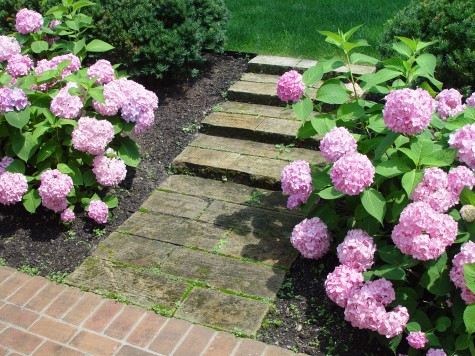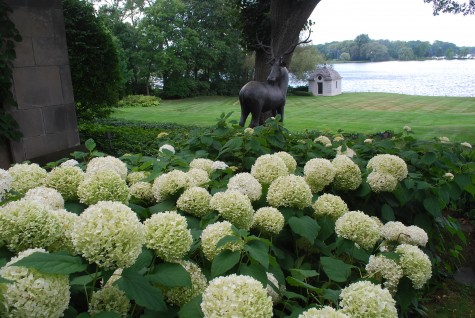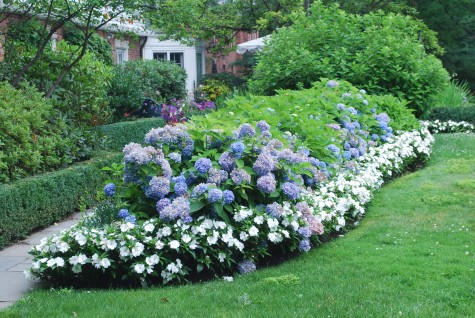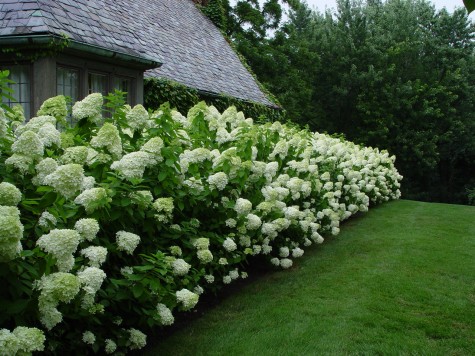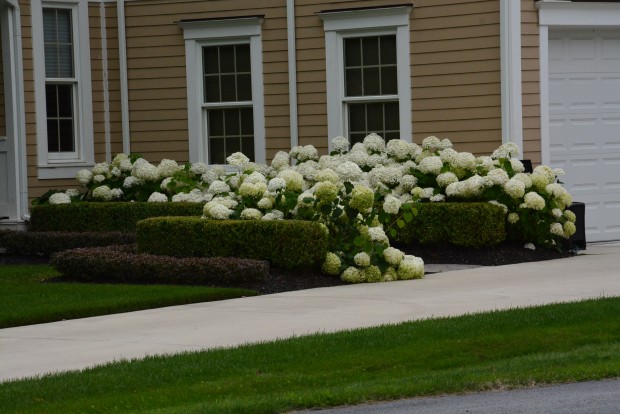 My previous post about hydrangeas was narrow in scope. Annabelle hydrangeas, or hydrangea arborescens “Annabelle” are commonly known as smooth hydrangeas. Their giant spherical flower heads are identifiable from a block away. They have an annoying tendency to flop over. Like peonies, their giant flower heads can topple an entire stem in a strong storm. That aside, they are showy. They bloom on new wood. Most encouraging of all for gardeners in my zone? They are both plant and bud hardy to zone 3.
My previous post about hydrangeas was narrow in scope. Annabelle hydrangeas, or hydrangea arborescens “Annabelle” are commonly known as smooth hydrangeas. Their giant spherical flower heads are identifiable from a block away. They have an annoying tendency to flop over. Like peonies, their giant flower heads can topple an entire stem in a strong storm. That aside, they are showy. They bloom on new wood. Most encouraging of all for gardeners in my zone? They are both plant and bud hardy to zone 3.
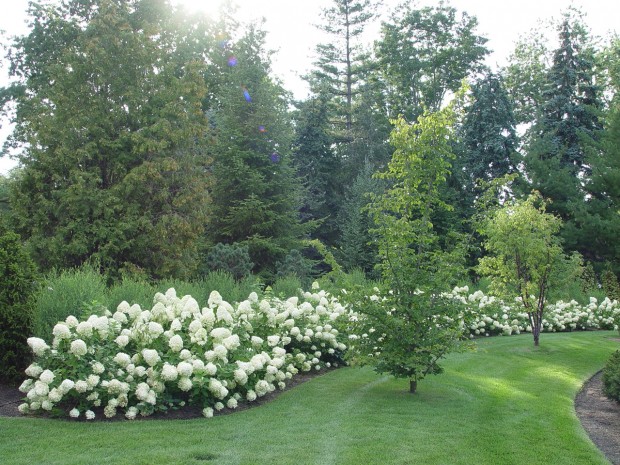 Limelight hydrangea, or hydrangea paniculata “Limelight” is hardy to zone 4. The flowers are cone shaped. The stems are incredibly strong, and upright. The flowers are not truly white-they are a lime green verging on white. They also bloom on new wood. This means the flowers are set on the current year’s growth. A bad winter will not impact the flowering. The 4-5 foot version, Little Lime, is just as strong and hardy as Limelight. The diminutive Limelight cousin, “Bobo”, grows 2 to 3 feet tall-and is entirely hardy.
Limelight hydrangea, or hydrangea paniculata “Limelight” is hardy to zone 4. The flowers are cone shaped. The stems are incredibly strong, and upright. The flowers are not truly white-they are a lime green verging on white. They also bloom on new wood. This means the flowers are set on the current year’s growth. A bad winter will not impact the flowering. The 4-5 foot version, Little Lime, is just as strong and hardy as Limelight. The diminutive Limelight cousin, “Bobo”, grows 2 to 3 feet tall-and is entirely hardy.
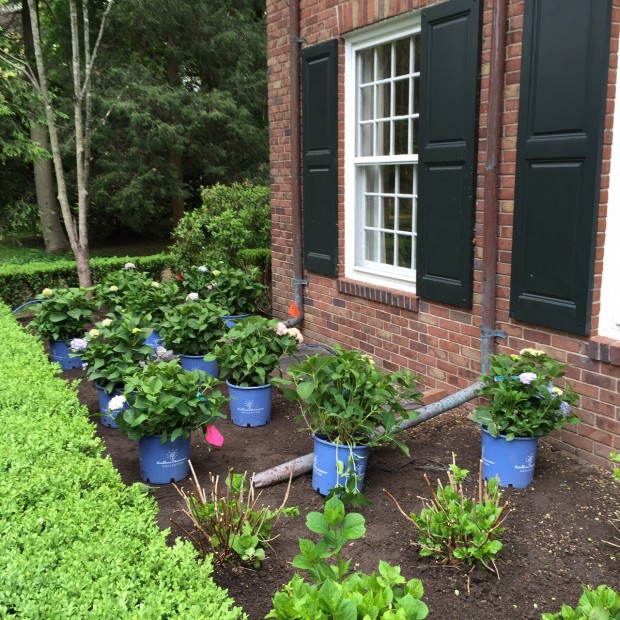 This said, I have had lots of clients express an interest in pink, or blue hydrangeas. Can you hear me sighing? The All summer Beauty hydrangeas, both in ground and about to be planted,that you see above, is known as a mophead hydrangea. As in hydrangea macrophylla. The mophead hydrangeas are most easily grown in zone 6- 8. Truly. It is easy to see in the above picture that my client’s “All Summer Beauty” hydrangeas died all the way back to the ground as a result of our very cold winter. Hydrangea macrophylla blooms on old wood. In early May, I could see that these hydrangeas had no live wood above ground, meaning there would be no June bloom on them. It would be a green summer for these hydrangeas- unless the plants would throw a few blooms on the new wood.
This said, I have had lots of clients express an interest in pink, or blue hydrangeas. Can you hear me sighing? The All summer Beauty hydrangeas, both in ground and about to be planted,that you see above, is known as a mophead hydrangea. As in hydrangea macrophylla. The mophead hydrangeas are most easily grown in zone 6- 8. Truly. It is easy to see in the above picture that my client’s “All Summer Beauty” hydrangeas died all the way back to the ground as a result of our very cold winter. Hydrangea macrophylla blooms on old wood. In early May, I could see that these hydrangeas had no live wood above ground, meaning there would be no June bloom on them. It would be a green summer for these hydrangeas- unless the plants would throw a few blooms on the new wood.
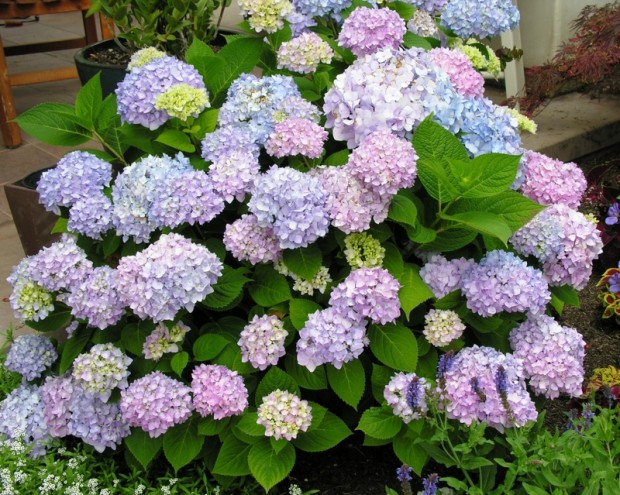 Shocking this zone 6-8 business. All Summer Beauty hydrangea was introduced with great fanfare. They bloom on the previous year’s wood, but they also bloom on the current year’s wood. This was good news for hydrangea growers in northern climates. We had hopes that pink and blue hydrangeas would work for us. I find that the bloom on new wood is sparse at best. The heavy bloom is the June bloom.
Shocking this zone 6-8 business. All Summer Beauty hydrangea was introduced with great fanfare. They bloom on the previous year’s wood, but they also bloom on the current year’s wood. This was good news for hydrangea growers in northern climates. We had hopes that pink and blue hydrangeas would work for us. I find that the bloom on new wood is sparse at best. The heavy bloom is the June bloom.
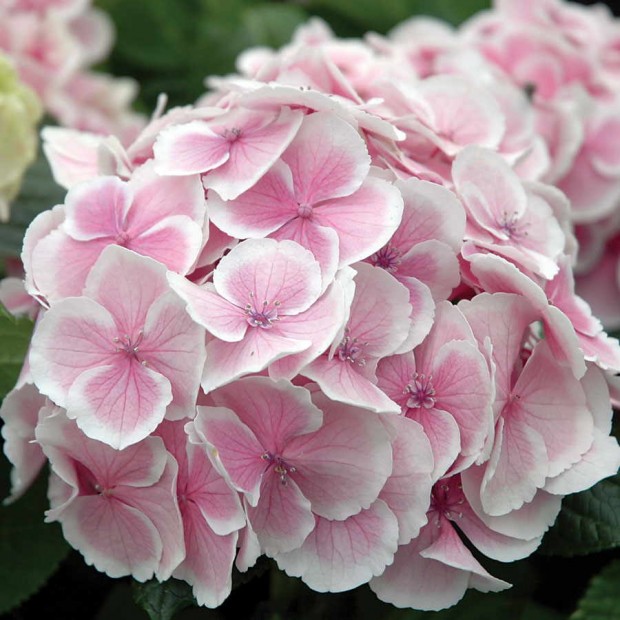 The reality of the mopheads is that they promise a lot, and deliver not so much. Success with them is varied. It is not so easy to figure what conditions will produce reliable blooming.The majority of the June bloom resides in the previous year’s wood – wood that needs to survive the winter. If you are growing All Summer Beauty, do not prune in the fall. A fall pruning removes flower buds. Site your mopheads out of the way of the wind. If you are mophead driven, be prepared to protect your plants over the winter.
The reality of the mopheads is that they promise a lot, and deliver not so much. Success with them is varied. It is not so easy to figure what conditions will produce reliable blooming.The majority of the June bloom resides in the previous year’s wood – wood that needs to survive the winter. If you are growing All Summer Beauty, do not prune in the fall. A fall pruning removes flower buds. Site your mopheads out of the way of the wind. If you are mophead driven, be prepared to protect your plants over the winter.
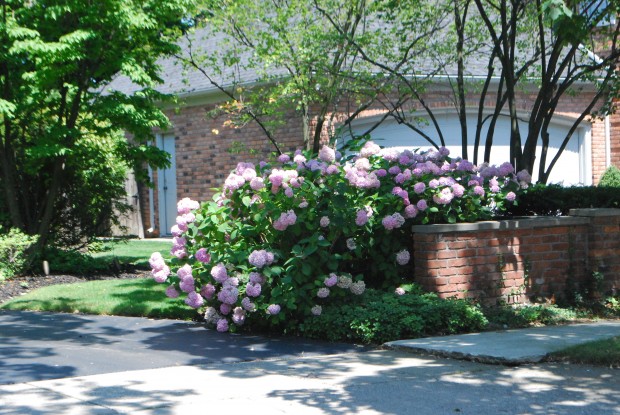 I do have a number of clients in Grosse Pointe. This is a metropolitan Detroit community situated along Lake St. Clair. The mopheads I see on the west side are great once in a great while. In this community, I see pink and blue hydrangeas blooming profusely every year. I can only surmise that the water is a mitigating circumstance. Water side gardens cool off very slowly in the fall. Plants enter the dormant stage slowly. A big lake is slow to warm up in the spring, and protects garden plants from precipitous drops in spring temperatures. A lake nearby is a blanket, both fall and spring. The big lake side gardens are most surely a zone 6 – maybe warmer. This is my guess.
I do have a number of clients in Grosse Pointe. This is a metropolitan Detroit community situated along Lake St. Clair. The mopheads I see on the west side are great once in a great while. In this community, I see pink and blue hydrangeas blooming profusely every year. I can only surmise that the water is a mitigating circumstance. Water side gardens cool off very slowly in the fall. Plants enter the dormant stage slowly. A big lake is slow to warm up in the spring, and protects garden plants from precipitous drops in spring temperatures. A lake nearby is a blanket, both fall and spring. The big lake side gardens are most surely a zone 6 – maybe warmer. This is my guess.
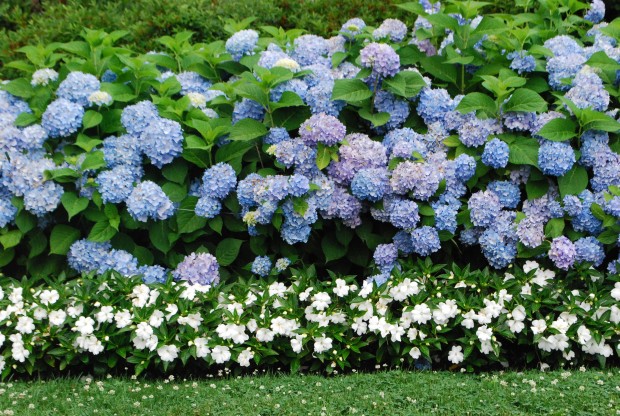
I have one client whose stand of mophead hydrangeas are gorgeous every year. Only one, I might add. I really have no idea why they bloom so beautifully. I was advised that this cultivar is Nikko Blue, but this information is anecdotal. I did not plant these. They were in place when I came to work for her. They are reliable in bloom, every year. My other clients with mopheads have lots of green years, punctuated by flowering years now and then. Some repeated successes I ascribe to a serious program of winter protection.
![[wallcoo]_hydrangea_picture_4(1)](https://deborahsilver.com/wp-content/uploads/2015/08/wallcoo_hydrangea_picture_41-620x465.jpg) I will say I have never seen hydrangeas other than white bloom like this. If you have a big love for hydrangeas, research any plant you have a mind to purchase. You need to know what species of hydrangea is the parent, and how to properly prune it. You need to cast a critical eye towards that place you plan to site them. Is it near a house wall? Is the intended planting in a windy and exposed location?
I will say I have never seen hydrangeas other than white bloom like this. If you have a big love for hydrangeas, research any plant you have a mind to purchase. You need to know what species of hydrangea is the parent, and how to properly prune it. You need to cast a critical eye towards that place you plan to site them. Is it near a house wall? Is the intended planting in a windy and exposed location?
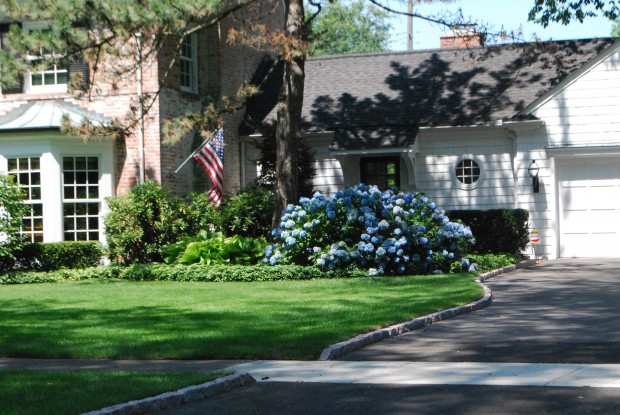 When a mophead hydrangea is happy, it is very very happy.
When a mophead hydrangea is happy, it is very very happy.
 A good client emailed me this picture yesterday. He saw these hydrangeas in bloom in Rhode Island. Could he grow them in his garden? This is a lace cap hydrangea which like the mophead, is hydrangea macrophylla. It will suffer from bud loss from spring frosts, a too late pruning and a too cold winter in the same way as the mopheads. As beautiful as they are, they will not reliably like being planted in a Michigan garden. If they are killed back to the ground over the winter, they can come back-but the bloom will be very sparse. I doubt my client would have much luck with these.
A good client emailed me this picture yesterday. He saw these hydrangeas in bloom in Rhode Island. Could he grow them in his garden? This is a lace cap hydrangea which like the mophead, is hydrangea macrophylla. It will suffer from bud loss from spring frosts, a too late pruning and a too cold winter in the same way as the mopheads. As beautiful as they are, they will not reliably like being planted in a Michigan garden. If they are killed back to the ground over the winter, they can come back-but the bloom will be very sparse. I doubt my client would have much luck with these.
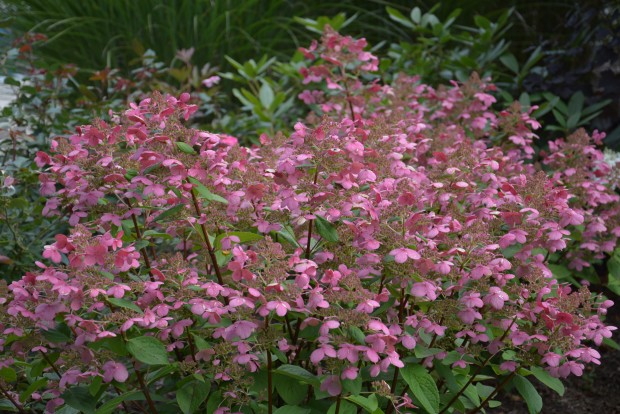 I do not have much experience with hydrangeas other than white. I have a preference for hydrangeas that wholeheartedly like my zone. Were I dead set on having them, I would experiment to see what location in the garden was the most friendly to good flowering. Some of the newer varieties may be more hardy for you than others. There are so many varieties available to choose from. Perhaps there is one that will work in your garden.
I do not have much experience with hydrangeas other than white. I have a preference for hydrangeas that wholeheartedly like my zone. Were I dead set on having them, I would experiment to see what location in the garden was the most friendly to good flowering. Some of the newer varieties may be more hardy for you than others. There are so many varieties available to choose from. Perhaps there is one that will work in your garden.
